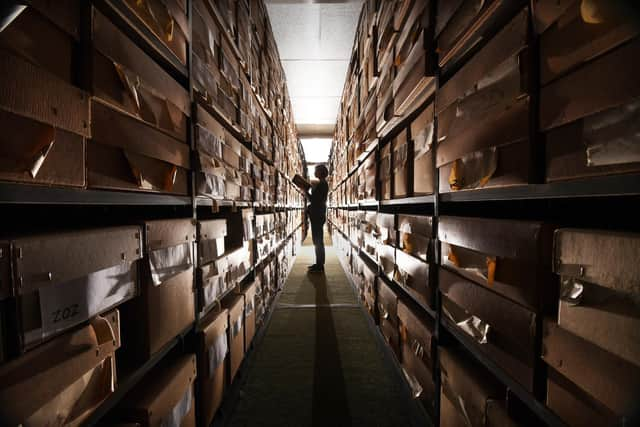North Yorkshire archives: A glimpse into the historic tales of derring-do and adventure
Experts at the County Records Office at North Yorkshire Council will illuminate documents which show how Yorkshire’s explorers of the past made discoveries both in the region and overseas.
Archives at Dusk, an evening designed to inspire visitors old and new, will take place in Northallerton at May 25.
Among objects set to be examined include glass plates depicting Rev. E. Jones of Embsay’s excavation of Elbolton Cave near Grassington in the Yorkshire Dales in the 1880s.


Rev Jones’ intrepidness found led to a wealth of Neolithic archaeology and artefacts being discovered in the caves, which included skulls dating back to around 3947 to 3764 BC.
Other items of interest include an Admiralty pass for Whitby ship The Stakesby in 1820 for one voyage to the East Indies with shipping records for Whitby and Scarborough revealing North Yorkshire involvement in the East India Company and global trade during the 18th and 19th centuries.
Rachel Greenwood, archivist at the council, said: “We’re looking at travel, adventure, plans and maps throughout the whole of the building.
“The shipping records from Whitby will how trade was carried out, looking at cargoes coming in from Bengal and Yemen with teas and spices.
“And also the smuggling going on with tobacco, alcohol and perfume.
“We’ll be looking at how diamonds were imported, one of the only trades you could do independently of the East India Company.”
Away from adventurers, archivists also plan to explore how the average Yorkshire citizen travelled across the region and beyond in the 18th and 19th centuries.
“We’ll be looking at early road atlases and records of building turnpikes - the golden age of coach travel, where there was a network of coaches throughout Yorkshire,” Ms Greenwood said.
A coach route was established between Yorkshire and London early in the 18th century, and before long a competing network was set up, with inns along the route enjoying a lucrative trade as coaching stops, contributing to the economic growth of towns and villages.
In North Yorkshire, Northallerton and Thirsk - still bustling market towns - were particularly advantaged by the new coach routes. Landlord Frank Hirst of the Golden Lion in Northallerton made a fortune, and the Golden Fleece in Thirsk was also extremely popular with coach route operators.
North Yorkshire Council’s executive member for culture and arts, Coun Simon Myers, said: “Maps are a snapshot in time designed to reveal or hide information. Archives at Dusk will investigate the cartographer’s art and show visitors the variety of reasons behind their commissioning.
“Every map has its own context, from depicting land as power, to showing political allegiance or social deprivation, as well as being used in planning military campaigns or an 18th century grand tour.”
Also launching on the evening is The Lure of Antiquity, an exhibition looking at 200 years of travel to Italy that will be at the County Record Office until the end of August.
It takes a journey to Italy through the eyes of 18th and 19th century travellers to the ancient sites of Rome and the Bay of Naples.
Featuring travel journals, diaries, sketches and correspondence, it offers visitors contemporary accounts of visits to ancient sites. These include the Colosseum by moonlight, ancient sculpture by torchlight and archaeological excavations at Pompeii and Herculaneum.